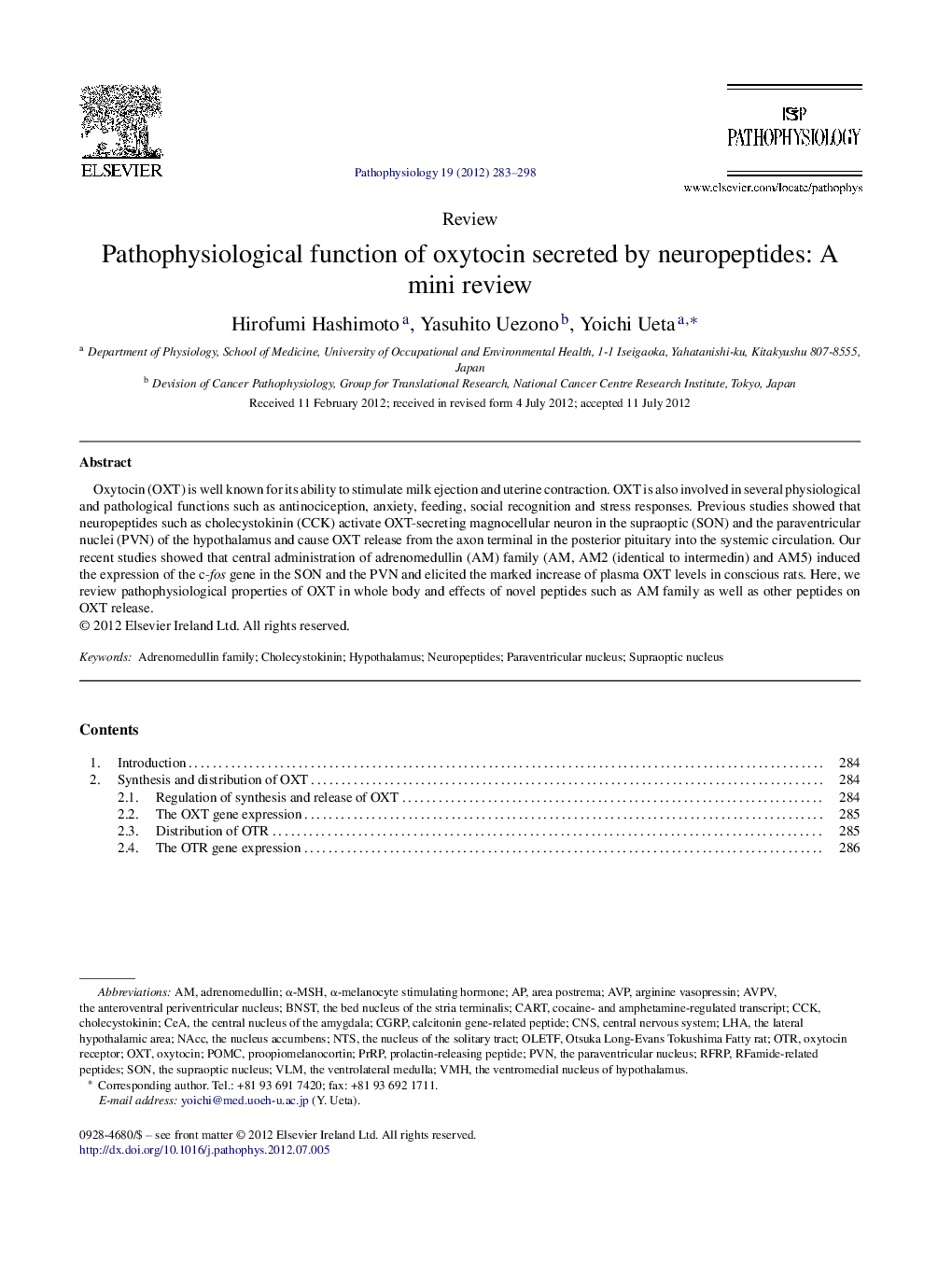| Article ID | Journal | Published Year | Pages | File Type |
|---|---|---|---|---|
| 4137139 | Pathophysiology | 2012 | 16 Pages |
Oxytocin (OXT) is well known for its ability to stimulate milk ejection and uterine contraction. OXT is also involved in several physiological and pathological functions such as antinociception, anxiety, feeding, social recognition and stress responses. Previous studies showed that neuropeptides such as cholecystokinin (CCK) activate OXT-secreting magnocellular neuron in the supraoptic (SON) and the paraventricular nuclei (PVN) of the hypothalamus and cause OXT release from the axon terminal in the posterior pituitary into the systemic circulation. Our recent studies showed that central administration of adrenomedullin (AM) family (AM, AM2 (identical to intermedin) and AM5) induced the expression of the c-fos gene in the SON and the PVN and elicited the marked increase of plasma OXT levels in conscious rats. Here, we review pathophysiological properties of OXT in whole body and effects of novel peptides such as AM family as well as other peptides on OXT release.
